
I teach fifth-grade students in a small town in Northern Virginia. I’m lucky in many ways—first, fifth graders are full of life and energy and are still excited by learning. There’s nothing better than seeing a student’s face light up and experience art or an exhibit they’ve never seen before. And secondly, I live extremely close to many opportunities for hands-on and experiential learning with museums, national parks, and battlefields—practically in my backyard. And we absolutely take advantage of these opportunities. So, with that in mind, I have a few suggestions and thoughts from someone planning field trip experiences that would hopefully help others make the most of the educational programs at museums around the country.
There are several factors teachers look for when choosing a field trip location: 1) How will we get there, 2) What will we find when we arrive, and 3) How will the experience support our learning?
How will we get there?
Logistics are the most stressful part of planning a field trip. My school is about 30 miles from Washington, DC. But that 30 miles will take between one and two hours, depending on traffic. To take a school bus, we can leave no earlier than 9:30 am, and we would have to return to the school no later than 1:30pm. This leaves us about an hour at the museum. Our other option is to charter a bus. We have four 5th grade classes, and with the county requirement of one chaperone for every four students, this means we need to charter three busses. The cost per student averages around $30, so just getting to the museum is going to be costly. I offer “Saturday in the City” days during the school years and during the summer. If a child can get to the museum with their parents, or by carpooling with friends, I will be there to offer a learning experience. Sometimes there may only be five students and their families. At other times, there may be 50. I know there are other teachers in a similar situation – such as other schools who run year-round and who have Saturday school.
Suggestions:
- If you have an entrance fee, wave it for schools – even if it is a weekend trip
- Accommodate the chaperones, as well. Your policy may be for one chaperone per 10 students, but our requirement may be different
What will we find when we arrive?
I will be bringing 115 students and 29 chaperones on every field trip I plan. I need to feel confident that when I arrive with that entourage, we know where to go, where our busses can park, and where students can put their bags. Also, where will our students eat lunch? In locations without a lunch spot, we have had to eat lunch outside on the sidewalk in front of museums, with snow and ice around us. When we are trying not to lose a child, or let a child accidently damage the museum, it’s hard to then figure out how the students will meet their basic needs.
One of the best ways to help us feel confident in our plans is communication. As I write this, I have two emails sent to two different museums that I’m still waiting for a reply. I know we all get busy, but our school systems require a bunch of paperwork and have very early deadlines. I only have nine more days to turn in the paperwork to my school for scheduling a trip in March. One question is quite practical – Do you have stools for a group of students to sit on in one of the exhibit rooms? As a teacher, one way to contain the students is to give them a spot to sit. A stool for older students, a carpet square for younger students – anything to define a learning space. But right now, my plan is to just have them sit on the floor since I haven’t received an email back. I don’t want the children sitting too close to the walls or waving pencils around artwork!
Suggestions:
- Provide information online regarding bus parking and who our first point of contact should be.
- Have a docent ready to welcome us, help the kids get off the bus, and point us in the right direction.
- If you don’t want students bringing bookbags, designate a place to leave them.
- Provide a place for us to eat lunch in the case of cold or bad weather – a conference room in shifts, a portion of the cafeteria. Not eating is rarely an option for us.
- Communicate with us. Make sure your email is easy to find online, and when we write, respond as soon as possible.
How will the experience support our learning?
This is probably the most important point. To leave the classroom, I must justify every minute. Do you remember when field trips used to be just fun? Unfortunately, our educational demands require that fun to be a little more creative. When we fill out the paperwork, we have to spell out exactly which standards the trip is covering. And we must explain how this field experience is imperative to enhance the learning.
This summer, I met a group of students and their siblings at the National Gallery of Art in DC. This is honestly one of my favorite museums. Before choosing to bring my students to this gallery, I explored several other art museums in DC. Though I really enjoyed the museums myself, from a teacher’s perspective, I didn’t think they would work out. I like the experiences to be more than just looking at and appreciating art. But I need to be able to guide the students through the art, and without quality online lessons and explanations, I didn’t feel fully prepared. And, some exhibits don’t necessarily work for all audiences.
I ended up choosing the National Gallery of Art. I began with a writing lesson at one of Canaletto’s landscapes. We discussed the movement in the painting and visualized the sensory details the artist portrayed such as the sound of the sails flapping in the breeze and the smell of the fish being sold on the plaza. Then, the students wrote from the perspective of one of the figures in the painting. Fortunately, I have some background in Art History, and history in general. But be aware that many teachers do not have the appropriate background in the content offered at your museums. High school teachers are specialists, but elementary teachers know their grade level topics well – not necessarily the entire course.
After working with me, the students went on a scavenger hunt throughout the museum. Online the museum did have scavenger hunt resources, but to keep the students busy and interested, I needed a little more. Fortunately, I had spent time the day before creating my own scavenger hunt. I wanted the kids to read and observe, and look for clues. I wanted the kids to make inferences, and ask why and how questions. I wanted them to look for mistakes or discrepancies. With a little work, that’s exactly what they did.
Suggestions:
- Create lessons online that are ready for teachers to print and use. And remember when creating lessons that we need to start our lessons from our standards. A museum lesson will be much more useful if you look at the educational standards first and see how the museum can be used to teach the standards, rather than creating a lesson first and then seeing which standards can be attached to it. There’s a very subtle difference there, but it’s important.
- Provide activities the students can do that are engaging and interesting, and can be done without a lot of guidance from the teacher or chaperone. Consider multiple learning styles, and multiple ability levels.
- The labels at many museums are written at an appropriate reading level for adult visitors. Create a differentiated guide for early readers, or students with disabilities.
- Ask local teachers to submit lesson plans, or hold summer workshops where teachers can learn about the museum and then write lesson plans. Keep these in a database for all teachers to access.
What could a full learning experience look like?
I’m currently planning a full day field trip back up in DC to kick off our informational text writing unit in March. But this time, instead of having my small group of students on a summer weekday, I’m going to be bringing all 150 students and adults. And instead of one museum, we will be visiting three – The Newseum, The National Gallery of Art, and the Museum of Natural History. We will be taking charter busses, and the students will arrive early to school, and be picked up well after the dismissal bell. And like usual, I plan on making every minute count.
We will arrive at around 9am at the Newseum. They have provided a great resource online that is several pages – getting the kids to explore the various exhibits, while learning about how to be an investigative reporter. I am planning on this activity taking about 90 minutes. Though it’s a quick exploration of a museum you could spend an entire day (or more) in, for my students, I think it will be enough. I only wish the resource was not as beautiful and colorful. After all, printing a 15-page document, and making over 100 copies will take a lot of ink and paper. Take poor teachers and schools without a budget into consideration here.
The students will then walk across the street and I will be waiting to teach my descriptive writing lesson at the National Gallery of Art. At this point, our giant group will be divided into four groups: two will eat lunch, one will do a scavenger hunt, and one will do the writing lesson. And then they’ll rotate.
After everyone has rotated through writing, scavenger hunting, and lunching, we will walk en masse next door to the Museum of Natural History. There, the students will choose a topic of their choice to fully explore and investigate. The students will bring their research back to school, and over the next month, write their research reports.
But still, there are so many questions – what if we run out of time? Fortunately, all the paintings at the NGA can be found online.
Suggestions:
- Help us continue the learning experiences beyond your walls. Provide online resources that can be used after visiting, or connections to other content areas.
- Create virtual field trips through your exhibits so we can visit without leaving our building. Make them have hands on experiences and critical thinking activities.
- Create traveling trunk shows that can go to the schools. Many museums allow schools to set up a traveling exhibit in their buildings. Or they send artifacts the students can touch and work with. Again, make these interactive, and do what it takes to have donors pay for these experiences. The schools ration copy paper, there’s rarely extra money for these experiences, as valuable as they would be.
Museums provide wonderful learning experiences for students, but in order to access them, the museum staff needs to work with the teachers to help them come out of the comfort of their classroom walls. Though field experience are fun, they are also a lot of work. Once the teachers see that they have help and support from experts, they will be more likely to take advantage of all the experiences you have to offer. And be prepared to help change plans on the fly. Working with kids is messy and chaotic, but full of wonder and amazement. Oh – and make sure you know where the students are going to sit. Seriously, that’s still stressing me out.
About the Author
Lisa Thayne is in her 20th year of teaching, currently in Prince William County Public Schools in Virginia. She holds degrees from Georgetown University and the University of New Mexico, and is a National Board Certified Teacher. She has previously worked in curriculum development and was a Director of Curriculum for the National Geographic Society’s The JASON Project. She currently lives in Virginia with her husband, two sons -one cancer survivor and one pterodactyl, and still dreams about spending the night in a museum

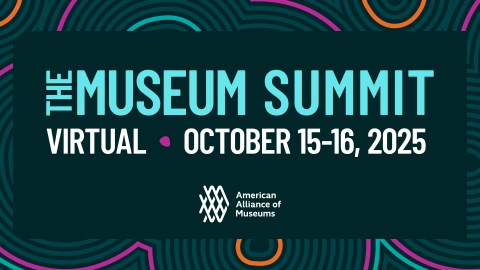
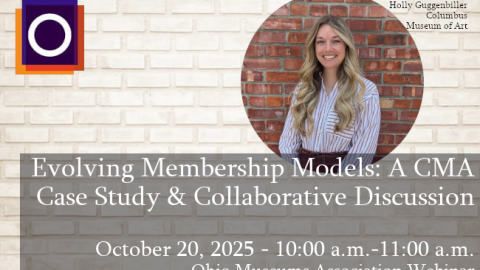

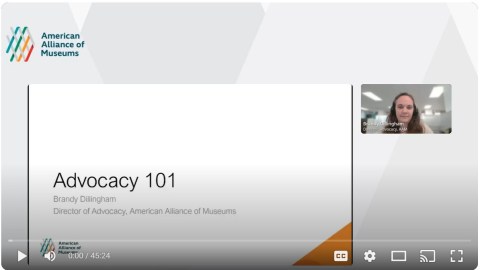
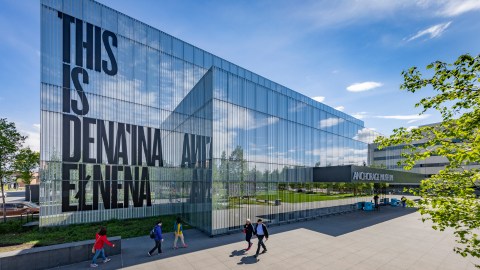
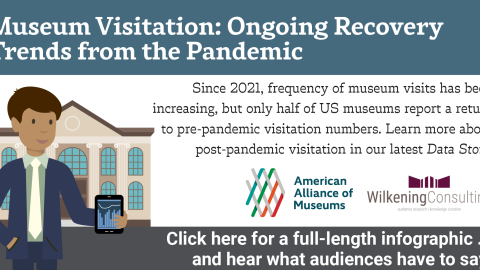

I’m a preschool teacher, and I’m planning to conduct a museum field trip for them. Thank you for this; I’ll make sure to provide engaging and interesting activities for the students. I hope I’ll be able to find a space museum for them.